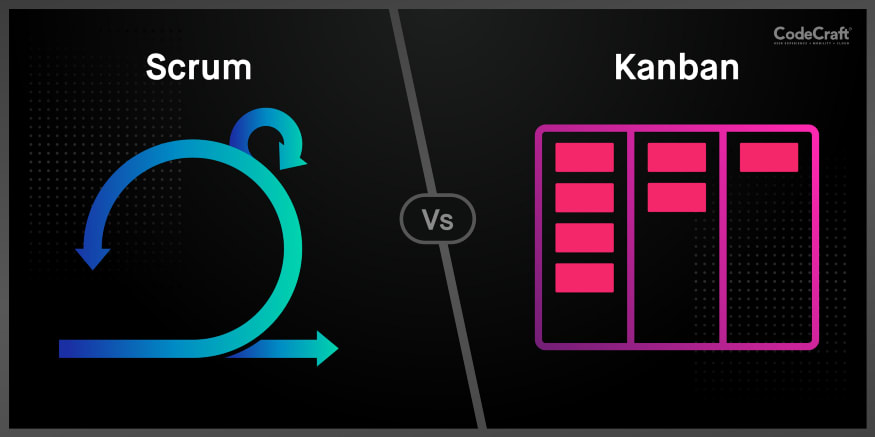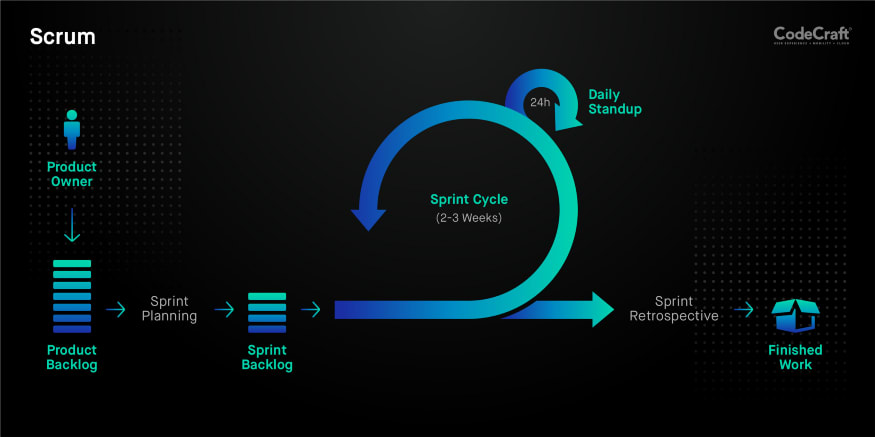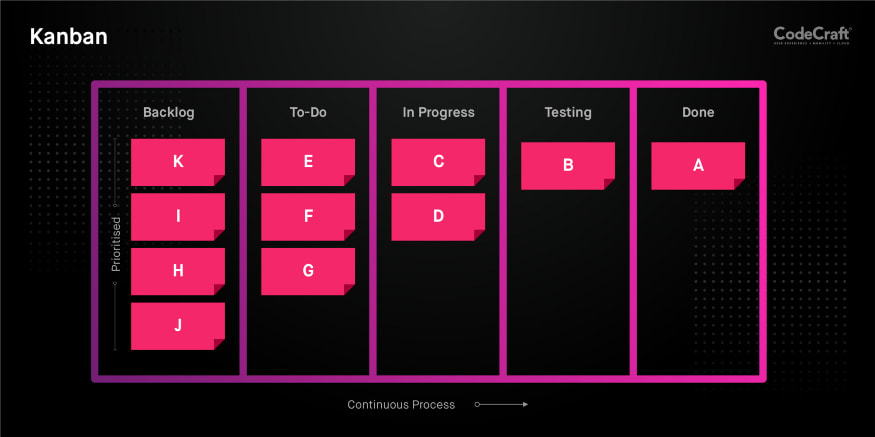Scrum is a project management framework based on the principles of agile methodology (https://agilemanifesto.org/ )which emphasizes small production cycles over short sprints of 2–3 weeks. Since its an agile methodology It also stresses on feedback-driven incremental changes incorporated throughout.
Scrum is widely used in the software development process, but the principles of scrum are industry agnostic. It can be applied to any process or domain or business vertical.
“Agility is principally about mindset, not practices.”
― Jim Highsmith, Agile Project Management: Creating Innovative
Products
Backlog
At the heart of a scrum is a project backlog. A project backlog is a well-authored list of tasks generally known as “Stories.” Stories are measured, or story pointed with some metric. E.g., 1,3,5,8,13 or 5 hours, 10 hours. As a rule of thumb, a project backlog should have sufficient tasks/stories to last at least two sprints. A business analyst or product owner prepares project backlogs in close collaboration with the customer during a periodic event known as Sprint planning. Representatives from the engineering, designing, quality are also involved in providing inputs on feasibility, cost, and time factors.
Sprints
Sprints are the actual production cycle or development cycle. Usually, sprints run for 2 weeks. At the start of a sprint, the project manager/ product owner includes stories or tasks from the project backlog. The development/engineering team works on the same for the duration of the sprint. Teams determine beforehand what constitutes the completion of a task. Usually, a task is complete once it’s tested and verified by the QA or customer. The end of a sprint features a new addition to the state of the existing product. At the end of the sprint, the primary stakeholder reviews the product and gives feedback. This feedback is used as an input for the next set of backlogs. This iterative cycle of
planning->develop->test->review->planning
forms the backbone of the scrum framework. A project manager often doubles as a scrum master who conducts the day-to-day sprint meetings; known as a Standup.
Standup
Standups are conducted on a day to day basis and are strictly time-bound. The goal of standup is for the team members to give a status update on a day to day basis. Members give an update on
“What they did yesterday?”
“What they will do today?”
“What are the challenges for the same if any.”
As the name suggests, standups are conducted standing up to put the focus on short time frames for providing updates
Retrospective
Scrum encourages a team to be self-motivated and drives continuous improvement. A “Sprint retrospective” is held to deliberate on the work accomplished in the previous sprint. The focus is on learning from past mistakes, improve efficiency, and share findings, which helps the team to improve and increase productivity.
Kanban
“In the beginning, it’s advisable to focus on the flow of your work and the idea that your work actually has a “shape.”
― Jim Benson, Personal Kanban: Mapping Work | Navigating Life
Kanban is a project management framework based on the principles of agile methodology with particular focus on the visualization of production flows. Kanban aims to improve productivity and reduce delays in the value chain by continuous monitoring, feedback and reduced waiting across the workflow.
Like its famous cousin “Scrum,” Kanban can be used across any domain or workflow. Any existing workflow can be expressed or represented using the Kanban board. There is no need to modify a workflow to include Kanban. An elementary Kanban board can be created with three lanes; “Todo,” “In progress,” “Done.” Depending on the workflow, these lanes can be more or less.
Visualization
Kanban places emphasis on visualization of workflows. On the kanban board, a workflow or its derivative is expressed in a naturally flowing order from left to right. For e.g., In the software development process, the workflow would be expressed with lanes as such
||Backlog|| — ||Progress|| — ||For review|| — ||For test|| -||For deploy||
Each task is expressed with cards, or color-coordinated. For e.g., In-progress tasks are expressed with green stickers or green colors. In-review tasks are expressed in Red color or red stickers. The tasks are moved to the adjacent lane, once it’s completed. Unlike a sprint, Kanban is not time-bound. Once a task is completed, it’s simply removed from the board.
By visualizing a workflow in such a manner, teams can obtain vital information about the work output. Useful metrics regarding the time taken to complete a task, where is a task getting held up, what is the dependency of one task over the other can be easily found out.
Kanban was first designed for the production lines of Toyota with emphasis on unused inventory. The Kanban board gives instant clarity to the team if a task is sitting idle on a lane for a long time. To overcome this, Kanban allows setting a limit on the input such that tasks are not lying idle in a lane because of the unavailability of any resource. This is generally known as W-I-P limit (Work in progress)
Typical benefits of Agile development methodology
1. A clearer view of process flow which helps in identifying bottlenecks
2. Flexibility in execution by incorporating smaller incremental goals as opposed to a monolithic, one-time development
3. Focus on continuous delivery by producing a subset of working software which is added to the existing product
4. Better tracking of issues and tasks
5. Continuous feedback leading to Increased productivity
6. Allows for change at any stage of the project development
7. Focus on the user all the time; their feedback & input
The primary goal of Kanban and Scrum is pretty similar, i.e., help organizations reduce execution time, optimize resource utilization, improve productivity & provide insights to measure. Both Kanban & Scrum are models of agile execution. Kanban focusses on specific aspects of the production process, whereas scrum is an entire framework for development. Kanban strives to present a clear picture of the workflow, while scrum defines process, steps & routines for workflow execution. It’s not uncommon to find Kanban being incorporated in a scrum process





Top comments (0)